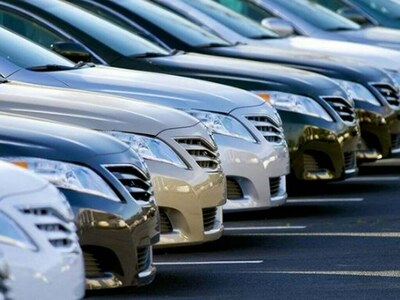Automobile Sector Shows Strong Growth in First Eleven Months of FY25
Pakistan’s automotive industry has experienced substantial growth during the initial eleven months of the fiscal year 2024-25. Car sales, motorbike sales, and three-wheeler sales have all shown considerable increases, which can be attributed to greater economic stability, increased consumer confidence, and a reduction in inflationary pressures.
Overall Sales Performance
According to data from the Pakistan Automotive Manufacturers Association (PAMA), total car sales in May 2025 reached 14,762 units. This represents a 35 percent increase compared to the previous year and a 39 percent increase compared to April 2025.
Factors Contributing to Growth
The substantial month-on-month recovery was mainly due to the low sales volume in April 2025. Road closures in Sindh caused by strikes and operational difficulties caused delays in deliveries, which reduced vehicle sales. As these problems subsided, demand increased dramatically in May. This increase was supported by a more stable macroeconomic environment, reduced financing costs, and enhanced consumer sentiment as people anticipated budget incentives.
Company-Wise Performance
- Sazgar Engineering Works (SAZEW): Recorded the most notable growth, with a 67 percent month-on-month increase and an 18 percent year-on-year increase. The launch of a new HAVAL model in April, which was well received by the market, was the primary driver of these impressive results. SAZEW’s total sales for 11MFY25 increased by 111 percent to 9,495 units, compared to 4,503 units in the same period last year.
- Indus Motor Company (INDU): Showed a strong performance, with sales increasing by 2.4 times year-on-year and 48 percent month-on-month to 4,829 units. This was the highest level of monthly sales in nearly three years. The rise was fueled by rising demand for popular models such as Corolla, Yaris, and Cross, whose combined sales hit a new three-year high.
- Honda Atlas Cars (HCAR): Reported a 69 percent year-on-year increase and a 17 percent month-on-month increase in sales to 2,005 units.
- Pak Suzuki Motor Company (PSMC): Experienced mixed results. PSMC had a 38 percent month-on-month increase, but it was still down 8 percent from the same month the previous year, with May sales of 5,519 units.
- Hyundai Nishat Motors: Saw a strong 58 percent year-on-year increase and a 45 percent month-on-month increase, with 1,307 units sold in May 2025.
Two- and Three-Wheeler Segment
The two- and three-wheeler sector continued its impressive performance, with total sales rising by 26 percent year-on-year and 11 percent month-on-month to 150,175 units in May 2025, the highest monthly sales in three years. This brought cumulative 11MFY25 sales to 1.378 million units, up 30 percent year-on-year, as affordability and essential transport needs sustained demand in this segment.
Tractor Industry Trends
Pakistan’s tractor industry, on the other hand, exhibited mixed trends. Total tractor sales in May 2025 were 2,184 units, a 29 percent year-on-year decrease but a 36 percent month-on-month increase. Weak farm economics impacted new purchase decisions. Millat Tractors sold 1,569 units in May 2025, a 34 percent decrease from the previous year, while Al-Ghazi Tractors Limited (AGTL) sold 615 units, a 17 percent year-on-year decrease.
Truck and Bus Segment
Meanwhile, Pakistan’s truck and bus segment experienced substantial growth, with sales in May 2025 increasing by 147 percent year-on-year and 17 percent month-on-month to 610 units. Vehicles from Hino, Master, JAC, and Isuzu all showed increases, bringing total 11MFY25 sales to 4,495 units, a 92 percent increase from 2,345 units in the same period last year.
Market Analysis and Future Outlook
Market analysts have attributed this broad recovery in the automotive sector to lower inflation, reduced interest rates, improved financing options, and a stable macroeconomic environment. The positive trend was especially noticeable in passenger cars and two- and three-wheeler categories, where pent-up demand from previous months was converted into actual sales as operational disruptions subsided.
Topline Securities projects that this trend will continue into the next fiscal year, driven by lower interest rates, improved vehicle financing options, and the introduction of new models with updated engines, including hybrid and plug-in hybrid vehicles. Market observers anticipate that as macroeconomic stability improves and consumer affordability rises, automobile sales volumes will continue to grow in FY26.
Expert Warnings
Auto expert Mashood Khan cautioned that the government’s proposed downward trend in Additional Custom Duty, Regulatory Duty, and Custom Duty for easing the import of used vehicles is likely to harm local manufacturing rather than increase exports in the future. He predicts significant consequences for the local manufacturing industry, warning that without a robust domestic industry, import bills will rise, and foreign reserves will suffer. The auto parts and other manufacturing sectors will face substantial challenges, and it is unclear how exports will increase without a thriving local industry.



Comments (0)
No comments yet. Be the first to comment!
Leave a Comment